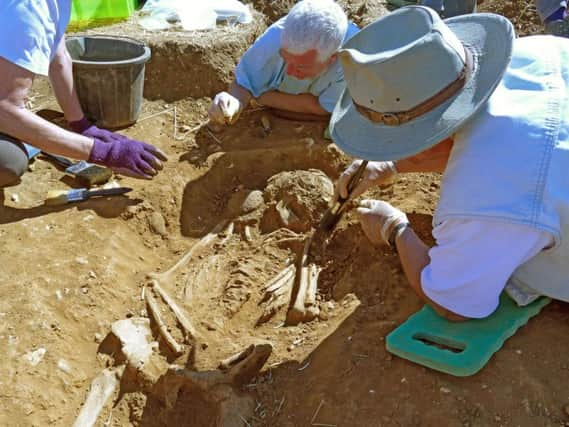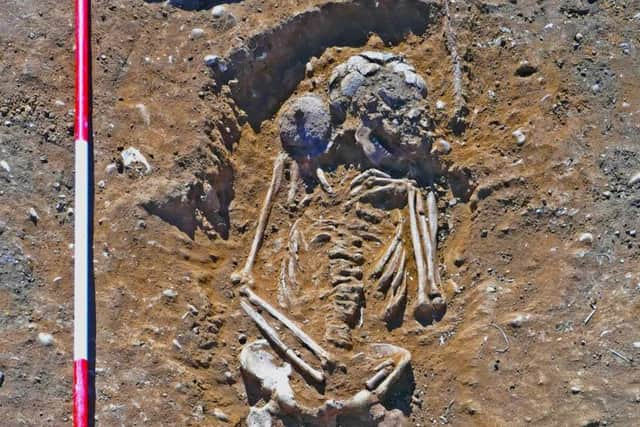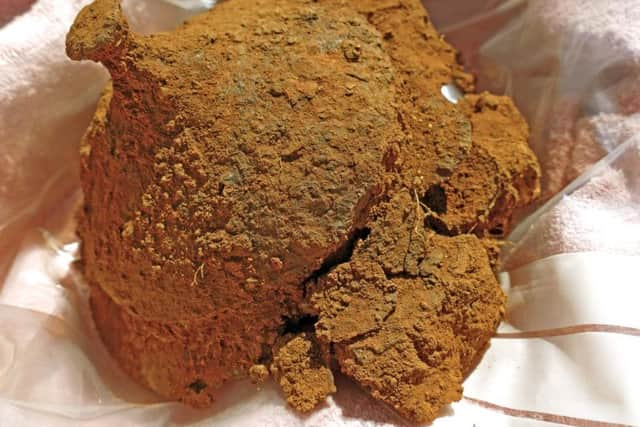Ancient grave could belong to '˜one of the first English' in the Daventry area


The body of the man, believed to have died aged 18 to 20, was found in a field near Nether Heyford.
The apparently pagan burial rites he was given has led experts to believe he could be one of the first English people to move to Northamptonshire from the Kingdom of Mercia.
Advertisement
Hide AdAdvertisement
Hide AdSteve Young, archaeological director for CLASP, said: “We have excavated bodies from the area before and we thought we had explored all the cemetery area. But last year ploughing disturbed two more bodies. So we did exploratory work and found this burial.


“The cemetery site has two burial areas. One is from the fifth century, with bodies laid out east to west. There are some objects buried in the graves, so they seem to be Christian but maybe hedging their bets.
“The second, where these remains were, is from the sixth century – 50 to 100 years later. They are buried north-south and are exclusively male and have shields, swords or spears.
“The body we found was from a young man. He was buried with a spear and a small fighting shield. There doesn’t appear to be any trauma on his bones, nor any of the others we found in this area, so they probably did not die from injuries obtained during fighting.
Advertisement
Hide AdAdvertisement
Hide Ad“The change in the type of burial comes from a big change in the population around that time.


“In the post-Roman period there was a British kingdom in the area – there is some evidence from Welsh sources. The burials in the earlier cemetery are likely to be ‘foederati’, people from Europe brought over here and paid to keep the peace. But the British appear to have abandoned the area – possibly migrating to what is now Brittany in France.
“In their place it seems people moved into the area from the neighbouring Kingdom of Mercia. The Mercian king did not convert to Christianity until the year 655, so these ‘warriors’ would be from a generation before that.
“We believe they were connected to the nearby Roman Villa. It’s likely that when they arrived the building would have already been a ruin, but there might have been a few standing walls to use. We found evidence of ‘squatters’ living in the villa’s bath house.
Advertisement
Hide AdAdvertisement
Hide Ad“Over time they would have grown and expanded and built new homes and farms, and over time those settlements coalesced into the village of Nether Heyford.
“Now the bones will be examined to see what else we can learn. We will be trying to get a carbon date for them, and possibly looking at the isotopes in his teeth to see where he grew up.”